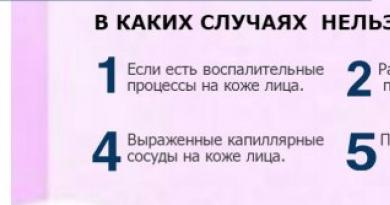English copybooks, English letters in cursive for children, copybooks in English, printable copybooks, English alphabet in cursive
Collected here English copybooks — letters English alphabet for children. Your little one will definitely like these interesting copybooks with funny pictures of animals. It's very easy and quick to learn how to write using these pictures. english letters in words.
Business, schools, organizations
As a general rule, do not use names of religious services or practices. . Use the names of gods and holy books. Use the names of specific businesses, buildings, schools and organizations. Use official names of government departments, agencies, and departments.
Acts, treaties and government programs
Use official names of acts, treaties and government programs. Capitalize the official titles of armies, navies and other military and police units. Use the names of wars and major battles. Use names of specific historical periods, events, and documents.
Learning a foreign language is not always boring and monotonous lessons. You can make English classes fun and interesting for your child.
To do this, you just need to select colorful and vibrant educational material with many beautiful visual illustrations, and then your child will learn English effortlessly.
Copybook English alphabet for children, letters O, P
Use legally protected brands and trademarks. Also, don't use a capitalistic brand name that has been converted into a generic noun through widespread usage: aspirin, thermos, escalator. Use the names of days, months, holidays and special days observations.
English alphabet for children with pictures
This was also the practice in Danish before the spelling reforms. It was also done in the 18th century on English. Luxembourgish, a close relative of German and one of the three official languages of Luxembourg, also still uses noun capitalization to this day.
The developmental and educational material that we post on our website will help you with this.
Right-click on the picture, click “Save picture as...” so you can save the image to your computer in full A4 paper size. Print it out and you can practice with your child.
We wish you interesting and fun lessons!
Imagine if we needed to capitalize all nouns. A similar observation has been made about the Japanese language by non-native speakers. They can't understand why Kanji need to be used in Japanese because they aren't really needed. Some believe this gives the Japanese a disadvantage in global competition because the complexity of Kanji adds to the amount of time spent writing each message.
Capital letters of the English alphabet
The cumulative effect of these inefficiencies can easily amount to millions or billions of dollars in losses. Most letters used in English come from Latin alphabet, which was completely top. Lowercase letters come from script and previous printing. When they were written quickly with a pen, they tended to develop into round and much simpler shapes, such as uniques. It was from them that the first developed small hands, semi-uniques and routine trifles that no longer remain connected between the two lines.
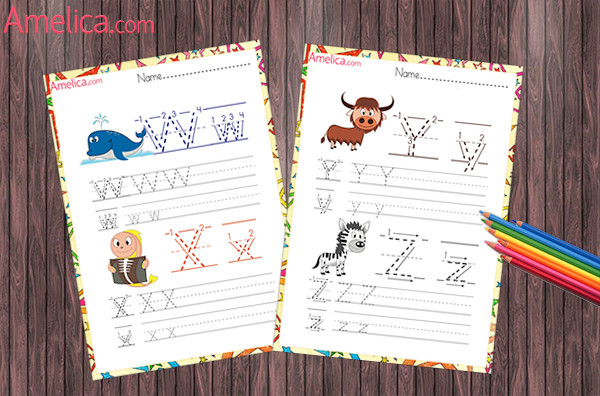
Copybook letters of the English alphabet for children

Copybook letters of the English alphabet for children

A key script was the Carolingian miniature, which was developed as a standard writing in Europe so that the Latin alphabet could be easily recognized by the small literate class from one region to another. The convention of capitalizing the first word in a sentence appears to have been part of Carolingian miniature from the very beginning. English has largely abandoned capitalized nouns, with special exceptions such as nouns. German, on the other hand, still capitalizes all nouns.
The reason why English continues to retain capital letters, is basically intelligibility. Words written in lowercase letters, with their different sizes and shapes, are actually easier to read than words written in all caps. But capital letters add a layer of information to the text, indicating the beginning of a sentence, names, titles, and proper nouns. The current trend away from capitalization is driven primarily by email and text messaging in particular. In the latter case, shifting between cases is cumbersome; the first one is just laziness.
Copybook letters of the English alphabet for children
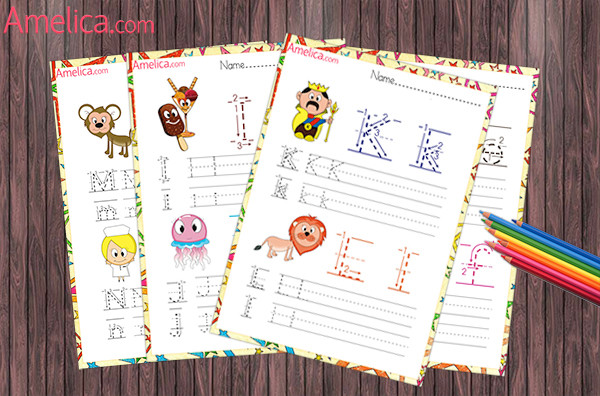
Copybook letters of the English alphabet for children
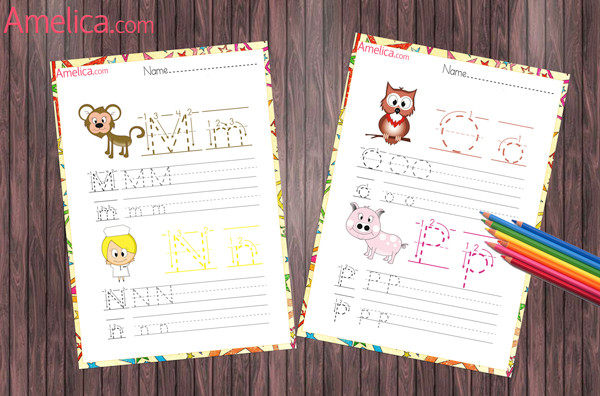
Copybook letters of the English alphabet for children
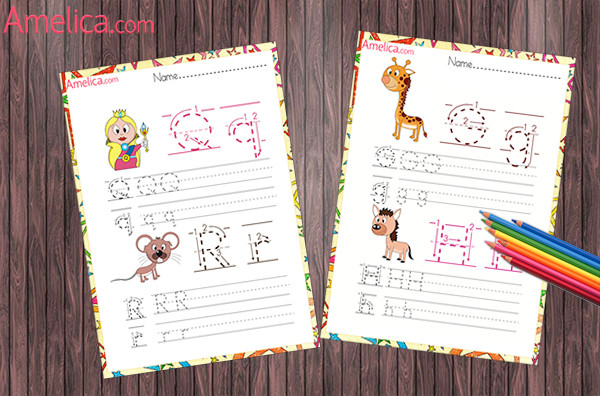
Copybook English alphabet for children, letters G, H
If you find this cumbersome to capitalize, be glad you don't write German. It's driving me crazy trying to read her emails - almost reading a letter within a letter. Most alphabets do not differentiate between miniature and capital letters - in fact the only alphabets that do are Roman, Greek, Cyrillic and Armenian.
English copybooks - English alphabet for children, letters S, T
But Hebrew, Arabic and many South and Southeast Asian alphabets do not discriminate. The English language does not have capital letters. Capital script was developed by sculptors in ancient Roman times and gained prestige as it was used in monuments. When written by pen, it proved labor intensive and required a skilled scribe. Cons were designed to provide convenience to the scribe and to preserve the writing of the material while maintaining readability. Thus, they were reserved for "economic" publications.
Copybook letters of the English alphabet for children
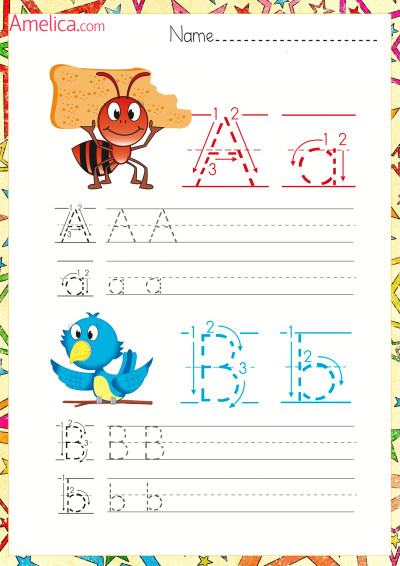
Copybook English alphabet for children, letters A, B
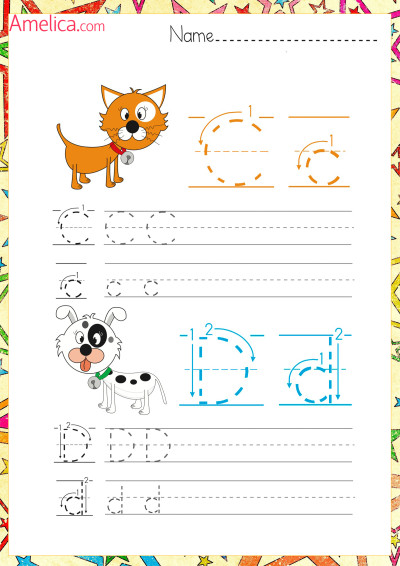
Copybook English alphabet for children, letters C, D
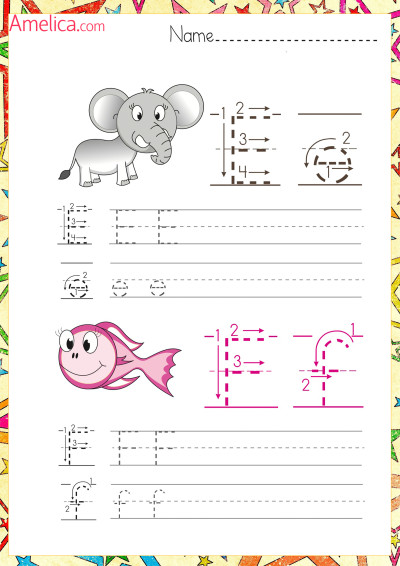
To add more dignity to the petty text, scribes began to “decorate” it with more prestigious capitals. So, the titles of books and chapters were written in capitals as well as names. Also the first letter, and sometimes the first word, or line of a chapter or paragraph.
This practice eventually shifted to using capitals only for the first letter of words of a title, proper names or periods. Carolingian scribe, your post was certainly interesting, except for one thing. Why did you start with "English doesn't have capital letters"?
For example, languages such as Turkish changed their writing system from the Ottoman Arabic script to a modified version of the Latin alphabet very recently. So it's true to say that modern English writing convention does use capital letters, but that doesn't mean that if you abolish them you'll have a different language. In short, the reason for using capitals in writing English and other languages is a tradition based on aesthetics rather than linguistics.
Copybook English alphabet for children, letters E, F
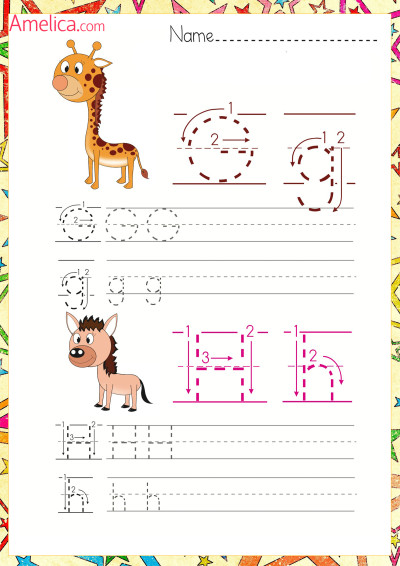
Copybook English alphabet for children, letters G, H
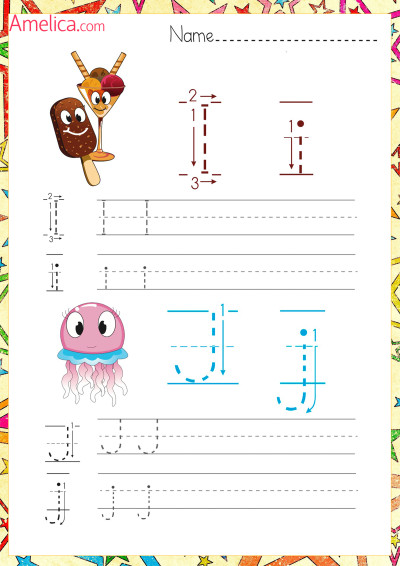
Copybook English alphabet for children, letters I, J
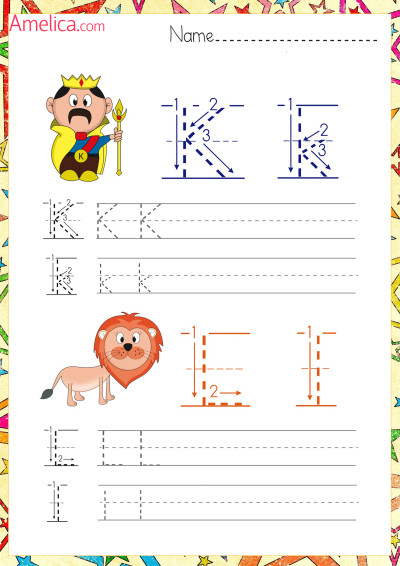
Copybook English alphabet for children, letters E, F
No one addressed Sunil Kumar's second question. Why can't it be minimized? What native language questionnaire one without articles, may be an inferred fact of the question itself. Naturally, the existence of articles in a new language would seem problematic if no one used it. But keep in mind the function of the word: it establishes definiteness in a noun phrase.
In languages without defined clauses, certainty remains. However, it is established in other ways, such as by choosing a noun or using an adjective acting on a noun. Among languages with certain articles, English may have the simplest system: Many European languages have three or more defined articles, only in English.
Copybook English alphabet for children, letters K, L
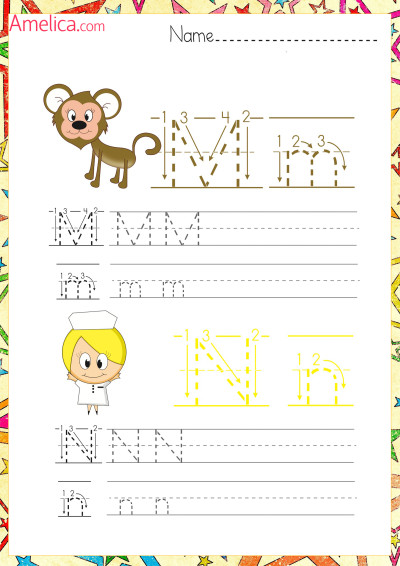
Copybook English alphabet for children, letters M, N

Copybook English alphabet for children, letters O, P

To completely eliminate it will require structural changes to the language itself. In English, capital letters are used at the beginning of sentences and for proper names, such as the name of a person, the name of a country, or an organization. The original Latin alpajata used only majushki.
The writing was typical rounded, with a little hesitant, half-tapered and cursive. When you read a sentence or a name without capitals, it doesn't look right. Basically English is a living language and customs change or do not change according to style and customs. Nowadays, most English speakers prefer capital letters. As often happens, the answer is in this question!
English copybooks - English alphabet for children, letters Q, R

English copybooks - English alphabet for children, letters S, T

Copybook English alphabet for children, letters I, J
Redundancy is built into writing, allowing for quick reading and easing the work the brain has to do. To say otherwise is also to say that graphic design is not needed. I for one am grateful that we still capitalize! She has an angel. Worse than those who do not lighten their vowels!
Copybook English alphabet for children, letters A, B
Written Japanese could not exist without. Also a word that can be misleading. What could be a problem is easily demonstrated. It's hard to say that second place is any different than coming in third. Reading these messages, the ones that don't use capital letters in the "right places" and the "correct" punctuation are very, very difficult to read, compared to the ones that don't. In fact, as some of the posts have stated, using initial capitals to start sentences and proper names actually simplifies the language and also makes it more legible and makes it more understandable.
English copybooks - English alphabet for children, letters U, V
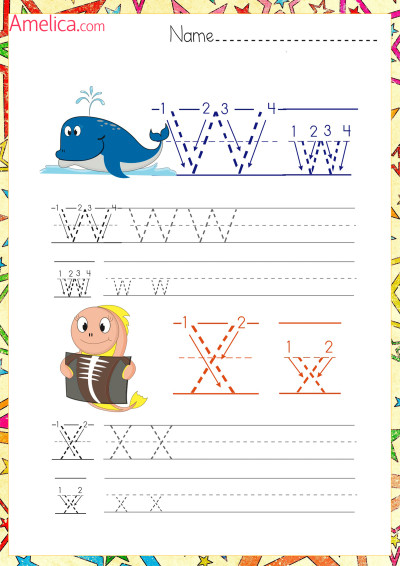
First, let's figure out what calligraphy is? Calligraphy(from Greek καλλιγραφία - “ beautiful handwriting") is one of the industries fine arts. Calligraphy is also often called the art of beautiful writing.
Copybook English alphabet for children, letters M, N
I had to read uncapitalized and inexperienced several times to understand them. This is carelessness and laziness, and this leads to inaccuracies and mistakes. Below is a list of words that are most often misinterpreted by people learning English as a foreign language. The stressed syllable is in bold.
It's like german word, isn't it? It consists of three words: everything. The same is true for "mb" in general. It has nothing to do with "cave" and "food". The "bol" at the end is actually two syllables. As if it never happened. Please note that there is no "green witch" in Greenwich.
We are starting to learn English and therefore, of course, we need to learn how to write English letters beautifully. For this purpose n You will need a poster not only with printed English letters, but also with capital letters. As a reminder, you can print one of the following options.
Option 1. This guide will help you remember how to write capital letters in English. The picture shows the letters with the direction of movement of the pen and the connections between the letters.
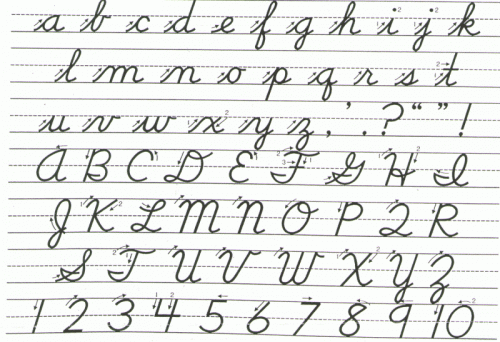
While there will likely be at least one “mite” in the park, there is not one to his name. Don't rhyme these two words. It doesn't rhyme with "tom". Note the difference between English and American pronunciation. We're going to do a study English pronunciation, both vowels and consonants. We will also see how the pronunciation of letters changes according to the words in which they are found, intonation and accentuation. First, it is convenient to start with the alphabet because it will help us learn most of the consonant sounds of English and some vocal sounds.
Option 2. This guide will help you learn to distinguish English printed alphabet and handwritten (capital) English alphabet, and will also help you remember their transcription.
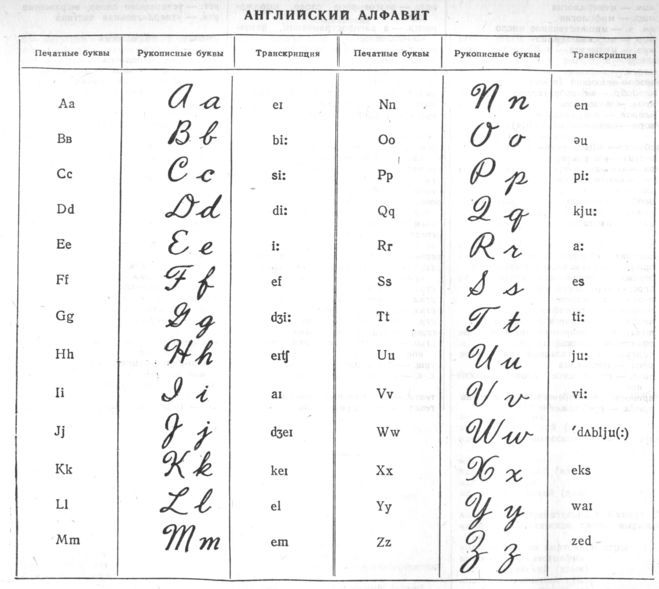
To develop beautiful handwriting , naturally it will take a lot of time, but first we need: pen and copy.
Below are links to download the copybooks:
Download "My first copybook in English".
Download "Copybooks for the English language".
In this first chapter, it is recommended to simply listen and repeat each letter of the alphabet as heard here, following some basic tips below about the similarities between the vocal sounds heard in each letter. In subsequent chapters, we will take a closer look at pronunciation and production techniques in English for Spanish-speaking students.
Distinguish the similarity of vocal phonemes between some letters of the alphabet
This helps identify the vocal sounds that some letters have. Each letter of the same color has the same vocal sound. Listen to the common vocal sound for each group of letters and try to reproduce it. Vocal sounds that have these common features.
A few more sources for downloading copybooks from torrents:
Print out a few pages of your favorite copybook every day. Each time moving to a new letter. Do this regularly and you will definitely succeed!Of course, it’s not easy to start writing without a visual aid, so I suggest you watch the video. From the beginning of the video for kids. You can practice with it even without copybooks, but with sketchbook leaves and pencils.
And for adults, I offer videos with a native speaker. At first glance, this may seem more complicated, but everything is intuitive and it is better for getting used to the perception of English speech.
And lastly! Watch this wonderful video with general recommendations on how to teach your child to write beautifully.



